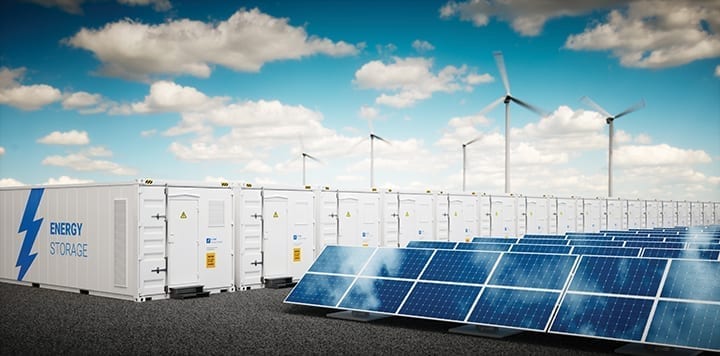The POWER Interview: Modeling Solutions for the Future of Energy
Credit to Author: Darrell Proctor| Date: Wed, 31 Aug 2022 13:43:42 +0000

Utilities function in the present but must always plan for the future. That’s even more true today, as the rapid pace of change with power generation technologies, and the transition to cleaner forms of energy, means utilities—whether they deal with electricity, natural gas, water, transportation, or are a municipality that pays attention to all those sectors—must model their operations as they look at their assets.
DIREXYON Technologies, a Canadian group based in Montreal, Quebec, is a software company founded in 2001 that provides modeling solutions to help asset-intensive industry sectors, including power producers, study future outcomes. Didem Cataloglu, CEO of DIREXYON, works closely with city planners and business decision-makers, using scenario planning and outcome modeling to plan assets for the next 5 or 40 years. When regulations change or companies pivot priorities to reach environmental, social, and governance (ESG) goals, Cataloglu and her team can take these factors into account when connecting and prioritizing assets.

Cataloglu, who has a long background in technology and organizational design, recently provided POWER with insight and information about how the power sector and other industries can utilize advanced modeling to help them make better short- and long-term operational decisions.
POWER: What do utility companies need to be doing more of in order to achieve truly clean energy?
Cataloglu: Most ESG experts agree there is still a lot of work to be accomplished, especially in the United States, where sustainability and clean energy are urgently being prioritized. However, power utilities are realizing that too many complexities are at play to effectively maintain the current aging infrastructures. If we examine clean energy production by state in 2017, and analyze the trajectory adopted, we are led to conclude that more robust technologies are required to better support decision-making for capital investments and organizational objectives.
I regularly provide guidance for leaders on how to achieve long-term decisions in the pressing context of today’s ESG challenges. With the proper tools, asset investment decisions can be rapidly executed. As we make the move toward clean energy, digitalization will play an even more vital role for organizations to be adaptable to changing regulations and sustainability goals.
Companies need better measurement strategies to get a clearer view of progress being made. An organization’s data on sustainability efforts will provide an accurate picture of how far it’s come in meeting ESG goals, and how much further it needs to go. Advanced analytics will assist in precise and timely management of clean-energy asset components and variables over the short-, medium-, and long-term.
POWER: In what ways can data be used to accomplish ESG goals? What metrics are the most impactful?
Cataloglu: At the most basic level, data is needed to quantify ESG and sustainability factors themselves. Without this, ESG and sustainability just become buzzwords with no way for organizations to accurately track progress to these goals. Data not only empowers organizations to meet ESG goals, but it also defines their goals.
The data needed depends on what an organization wants to measure and improve upon. For example, does a utility company want to reduce its carbon emissions? Once a company identifies which ESG factors it is quantifying and prioritizing, this will determine what internal data needs to be collected and analyzed.
Like any other company project or initiative, ESG performance can’t be measured without accurate data. ESG goals would fail to reflect company priorities and progress would be misrepresented. Inaccurate data can also misconstrue what the next steps or future targets should be, which further sets a utilities company up for failure. Successful reporting requires accurate data, no matter what companies are reporting on.
To build credibility in reporting, utilities need to be transparent about every stage of data collection, analysis, and measurement. Consistency is also key. To establish benchmarks and showcase progress, the same processes and resources must be continuously measured according to the industry’s current ESG standards. By doing this, it shows the data is reliable and also helps hold utility companies accountable to ensure they are actively reaching set targets. Consistency, transparency, and accountability will boost the credibility of data, reporting and goals.
Companies need to challenge and outsmart the status quo by working with emerging situational data. Decisions for asset investment and service levels in a company’s clean energy transition should continuously evolve with all possible contingencies as we transition toward net-zero initiatives by 2050.
POWER: Transitioning to clean energy is a big undertaking for any company. How can utility companies be better prepared for such initiatives?
Cataloglu: Power utility companies will be relying upon innovative technology to simulate their asset evolution and to test and select the best strategy to achieve organizational objectives. They will need to build a risk framework to evaluate climate-related risks and be able to rapidly assess the cost of failure through data-driven insights. Leaders need to quantify the impacts of their strategies on grid reliability, as well as environmental health and safety.
We forecast that more utility companies will be adopting decision analytics software to more accurately portray the long-term economic impacts of their decisions in alignment with global green efforts.
POWER: How does the digital transformation play a role in ESG initiatives?
Cataloglu: To ensure a smooth transition to clean energy, advanced analytics will assist in precise and timely management of your clean energy asset components and variables over the short-, medium-, and long-term.
Companies need to act now in making long-term asset investments because this shift is happening as we speak. Focus on securing the right talent and using the right technologies to make decisions that will help with more efficient handling of any potential risk that could arise—such as evolving markets and regulations.
First, decision-makers must align their organization’s decisions and actions to support the achievement of the organization’s overall strategic goals. Once you have established a high-level view of how you will achieve the complete transition to clean energy and meet ESG goals, decide how to best decarbonize over the next few decades. Focus on integrated processes and the automation of decentralized operations. Use technology to help you predict disruptions before they occur, in order to be as prepared as possible.
—Darrell Proctor is a senior associate editor for POWER (@POWERmagazine).
The post The POWER Interview: Modeling Solutions for the Future of Energy appeared first on POWER Magazine.